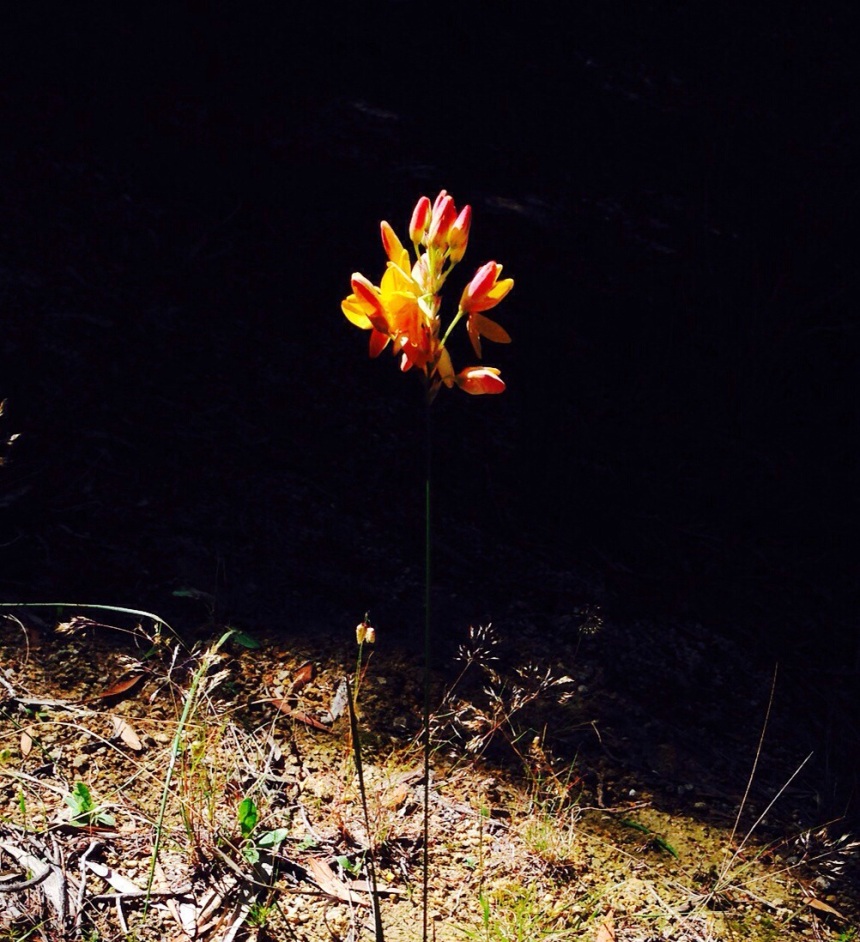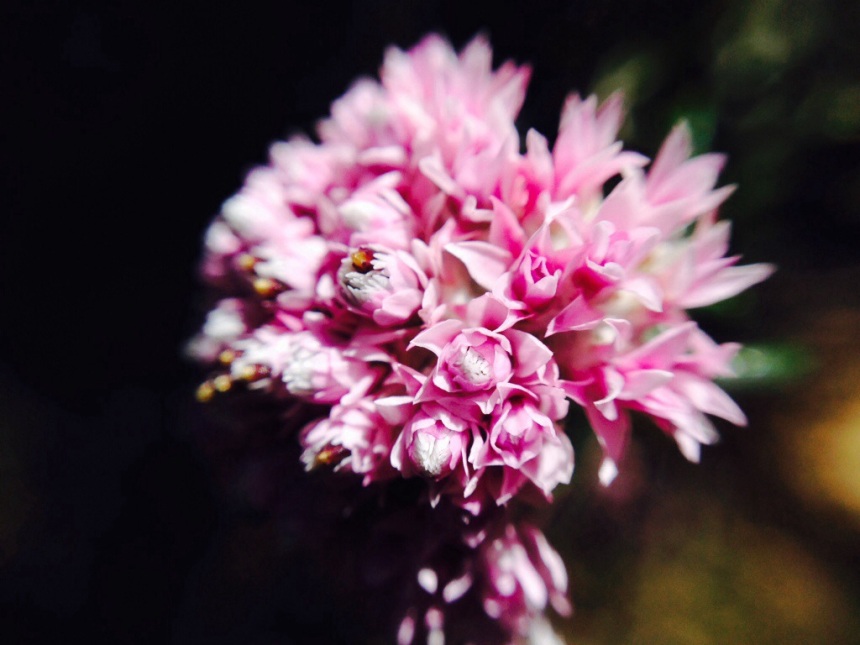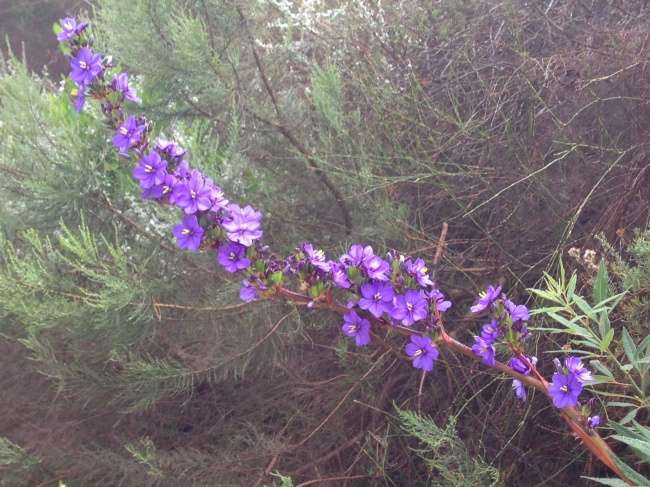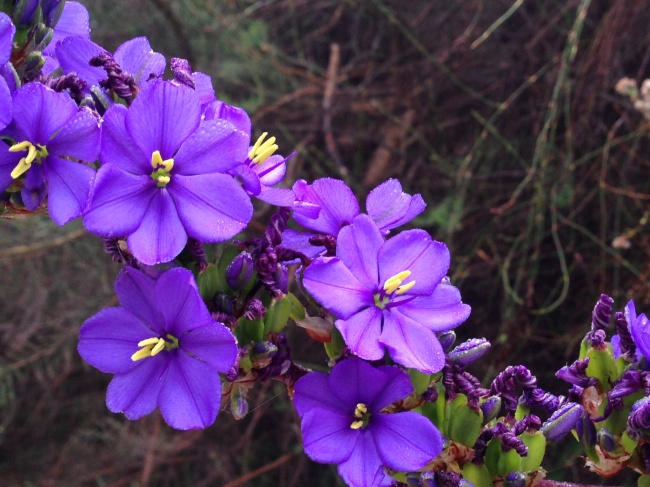Wild windy summer sunsets
I never get tired of looking at the view from the balcony and because we look west we have wonderful sunsets. Tonight’s was special by any standard. I took this photo just as the sun had gone down – no filter, just the last light of the setting sun reflected from the clouds onto the dam.
We had Christopher, the brother-in-law, to stay and before he left I offered to take him up the mountain and show him the flowers. All spring we’ve had a wonderful time showing our guests the wonders of the mountain fynbos flowers. That time has passed. He loved being up on the mountain but the flowers have become sparse and less interesting to the casual visitor. A really passionate gardner might still enjoy it – for the less passionate there is merely fading and die back and the fucundity of the land has passed into dryness survival mode.
It doesn’t mean that there is nothing of interest out there, I’ve often mentioned that yellow daisy-like flowers are among the hardest to identify. This one could be the rock daisy, Heterolopis, or perhaps Leysera. If I see it again which is quite likely we’ll take a closer look.
The wind continues to blow – it has been more than a week now, which is quite unusual and not a let up in the forecast. The dogs love it particularly the wolfhounds and here is Maebh standing in the wind, allowing it to stream through her coat.
Jemima Chew on the other hand finds her solace in water and the permanent streams. She loves to wallow and lie the flow and then stands up, looking about her, thoroughly pleased with herself.
As Christopher and I chatted and walked I kept my eyes open for anything new and exciting, expectations low. And here we are, hidden beneath some fynbos scrub, this exquisite pelargonium. There are nearly 300 subspecies, 150 in the fynbos region of which only 20 or so are in the book. This one is so lovely, the colours, the delicate shape of the petals. I would be tempted to move it to the garden but my fingers are not the greenest and what if it’s the only one? I only ever transplant the very common flowers, anything that might be rare, special or precious belongs on the mountain.























































